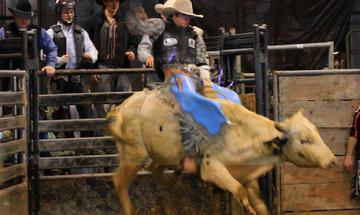For her 3 Minute Wonders commission, 2009 Jarman Award winner, Lindsay Seers produced four films which chart her mute childhood in Mauritius, her desire to become a human camera, her foray into ventriloquism, her troubled relationship with her missing collaborator/sister Christine and finally her resolution to be a projector told through the eyes of those who have known her personally.
Part One: Serios/Seers
Writer M. Anthony Penwill, an occult photography expert, recounts the tale of his meeting with Ted Serios, the psychic photographer much studied by paranormal investigators. He recollects how this led him to encounter the artist Lindsay Seers, in whose attempts to become a human camera he saw a parallel obsession.
Part Two: The Necromancers
Theatre director Steve Pearl talks about his chance meetings with Seers' auntie Barbara, a female ventriloquist, and her Uncle Patrick, a stage performer with alternative personas, and explains their influence on Seers' subsequent deployment of ventriloquism and theatrical performance in her work.
Part Three: The Paramnesiac
The instability of memory comes to the fore when Seers' step-sister Christine, while filming in Rome, is involved in a moped accident, which severely damages her memory. Through a delusional encounter with found photographs Christine began to confuse her identify with that of the seventeenth century Queen Christina of Sweden, immortalised in Greta Garbo's 1933 film.
Part Four: The Projectionist
In a rare interview, Seers herself talks about her journey towards becoming a performance artist. Born in Mauritius, as a child Seers did not speak until the age of 8. In an act clearly linked to this troubled relationship to language she later becomes a human camera by taking photographs with her mouth until she is finally inspired to become a living film projector.
Part One: Serios/Seers
Writer M. Anthony Penwill, an occult photography expert, recounts the tale of his meeting with Ted Serios, the psychic photographer much studied by paranormal investigators. He recollects how this led him to encounter the artist Lindsay Seers, in whose attempts to become a human camera he saw a parallel obsession.
Part Two: The Necromancers
Theatre director Steve Pearl talks about his chance meetings with Seers' auntie Barbara, a female ventriloquist, and her Uncle Patrick, a stage performer with alternative personas, and explains their influence on Seers' subsequent deployment of ventriloquism and theatrical performance in her work.
Part Three: The Paramnesiac
The instability of memory comes to the fore when Seers' step-sister Christine, while filming in Rome, is involved in a moped accident, which severely damages her memory. Through a delusional encounter with found photographs Christine began to confuse her identify with that of the seventeenth century Queen Christina of Sweden, immortalised in Greta Garbo's 1933 film.
Part Four: The Projectionist
In a rare interview, Seers herself talks about her journey towards becoming a performance artist. Born in Mauritius, as a child Seers did not speak until the age of 8. In an act clearly linked to this troubled relationship to language she later becomes a human camera by taking photographs with her mouth until she is finally inspired to become a living film projector.


